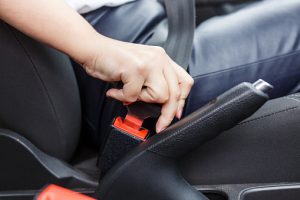What's the Safest Seat in the Car in West Virginia Auto Accidents?
 A recent West Virginia collision caused two deaths and left two injured. The victims who died in the accident included a driver and a passenger. Additional passengers also sustained injury in the accident. WSAZ reports the collision is still under investigation.
A recent West Virginia collision caused two deaths and left two injured. The victims who died in the accident included a driver and a passenger. Additional passengers also sustained injury in the accident. WSAZ reports the collision is still under investigation.
The accident is one of many in which passenger injuries occurred in West Virginia. Drivers need to do everything they can to avoid collisions, and passengers in cars need to buckle up when riding in a car and avoid getting into vehicles with dangerous drivers.
Drivers and passengers should also be aware of the risk of passenger injuries and fatalities. One common question which arises among passengers is which seat is the safest in the car?
Most evidence suggests that the safest seat in a car accident is actually the driver's seat. As Insurance Institute for Highway Safety (IIHS) explains, crash tests usually focus primarily on making sure the in-vehicle technology protects the driver.
The decision to prioritize driver safety features was made by IIHS because every car has a driver but not all cars have passengers. Since car makers want to score well on crash tests, this has resulted in a lot of focus on driver safety and less concern about passenger injuries. IISH is considering adding a component taking account front seat passenger safety in its Top Safety Rating metrics in order to try to prompt carmakers to begin focusing on protecting passengers.
While the front passenger seat is not as safe as the driver's seat, it may actually be safer than the back seat. This runs contrary to popular belief, as most people think the back seat of a car is actually a less risky place in an accident than the front seat.
The idea the back seat is safer dates back to decades ago when there were few safety technologies and motorists in the front were at greater risk because they were closer to the crash area and because there were fewer hard surfaces in the back.
Today, however, the back sat remains safer for children 12 and under, but is a more dangerous place for older passengers. For older adults, even when seat belts are used in the back seat, there is a greater chance of dying in the back than in the front, according to a study reported on by CBS News.
The back is more dangerous for the same reason the passenger seat is more dangerous than the driver seat: crash tests are not focused on it. In fact, there are no crash test dummies in back seats when most car safety features are tested. This creates a substantial risk of passenger injuries and fatalities for those who are in the back.
Drivers need to know their passengers are at risk, especially their back seat passengers, so they can make smart driving choices to try to keep passengers safe.
